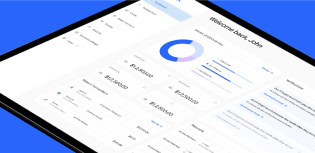How intelligent finance tools drive smarter nonprofit budgeting

About PEX
- Reduced reconciliation time by 93%, freeing staff to focus on programs instead of paperwork
- Save up to 3 days of staff time monthly by eliminating manual exports and integrating spend data across systems
- Saved 8 hours per month per client by automating tracking and improving accountability across grants
Today’s nonprofits are tasked with the impossible: deliver more impact with shrinking budgets. With government grants declining across the board, many nonprofits are staring down funding gaps of 20–30%.
The impact shows up daily. A South Carolina women’s shelter, Safe Harbor, had to eliminate legal services and child programming when funding dried up. In Sand Point, Alaska, KSDP radio (serving only 600 residents) relies on the Corporation for Public Broadcasting for 70% of its budget. Losing that support threatens the town’s only local news source.
The result is a widening gap between what communities need and what nonprofits can deliver. Budgets are stretched thin, and every financial decision carries higher stakes.
The nonprofit challenge: balancing mission and money
For nonprofit finance leaders, every budget decision is a balancing act. On one side is the mission: expanding programs, meeting rising community needs and delivering impact. On the other is money—finite resources, strict compliance requirements and the constant need to prove accountability to donors and regulators.
This tension is compounded by structural pressures. Leaders must satisfy donor expectations, maintain transparency and protect organizational resilience, all while stretching limited budgets further each year. Every choice carries weight: funding one urgent need often means scaling back in another.
The challenge isn’t just cutting costs. It’s navigating trade-offs to keep the mission alive, ensure compliance and maintain trust in an environment where every dollar matters.
Why traditional nonprofit budgeting methods fall short
Many nonprofits still rely on spreadsheets and manual workflows. Familiar as they may feel, these tools create obstacles: updates lag, formatting errors creep in and critical details go missing. Confidence in the numbers erodes.
Without real-time visibility, finance teams are forced to react after the fact. Overspending may not surface until weeks later, when reconciliation is complete and the money is gone. Leaders miss the chance to reallocate funds to urgent needs or expand programs that are working. Even small delays or errors can trigger painful cuts elsewhere.
Audits compound the problem. With receipts and spreadsheets scattered, finance teams can spend weeks pulling together documentation instead of focusing on the mission.
In short: traditional budgeting keeps finance one step behind. In a sector where every dollar counts, inefficiency means lost opportunities and diminished impact.
How intelligent finance tools change the equation
Modern finance technology replaces repetitive, manual processes with automation and AI. Tasks like receipt capture, GL coding and reconciliation happen in real time via automated workflows, reducing reliance on spreadsheets and manual data entry.
Dashboards provide clear visibility into every dollar. Finance teams can track spending by grant, program or department, with up-to-date data available at a glance.
Pre-set spend controls keep budgets aligned with donor and grant requirements. Rules built into the system ensure funds are used as intended and flag potential issues before they escalate.
These tools also integrate directly with nonprofit finance software such as Blackbaud, Aplos and Daxko. Eliminating duplicate entry and syncing data across systems ensures budget information is accurate and consistent.
By combining automation and AI, modern finance tools transform budgeting from a backward-looking scramble into a forward-looking vision.
The benefits of smarter budgeting for nonprofit finance teams
Replacing manual processes with automated tools doesn’t just improve efficiency: it reshapes how finance teams plan and operate.
- Time savings
Automation gives back hours once spent on data entry and reconciliation. Lean teams can redirect that time toward budget planning and analysis.
- Accuracy
With consistent, real-time data, budgets are more reliable. Finance leaders no longer second-guess the numbers or discover errors when it’s too late.
- Compliance and transparency
Built-in controls and clear reporting make it easier to meet grant requirements and show donors exactly how funds are used.
- Agility
Live data allows teams to adjust quickly, reallocating funds to meet a sudden need or scaling back to prevent overspending.
- Team morale and focus
Reducing repetitive work eases pressure and prevents burnout in overstretched teams.
In short: smarter budgeting gives finance leaders clarity, confidence and flexibility to support the mission, even when budgets are tight.
Nonprofit success stories: smarter budgeting at work
Smarter budgeting isn’t just theory: it’s happening every day. Here are three ways nonprofits use PEX to gain control and strengthen budgets.
- First Baptist Church of Argyle
FBC Argyle needed better visibility into spending across ministries. By adopting PEX and integrating with Aplos, it automated expense reconciliation and gained clear, accurate budget data. This saved five hours of admin time each month and gave leaders confidence that dollars matched the budget.
- Rare
Global nonprofit Rare struggled to manage budgets across countries and currencies. PEX integration with Databasics eliminated manual data exports. With two to three days of staff time saved each month, Rare’s finance team could focus on monitoring budgets and supporting programs instead of chasing spreadsheets.
- Skeehan & Young
Skeehan & Young is an accounting firm that supports nonprofits with budgeting and compliance. By implementing PEX with spend controls and integrations to systems like Daxko, they streamlined expense tracking for clients, saving eight hours each month per client and improving accountability for how funds were allocated.
Together, these stories show how PEX helps leaders move beyond manual processes, reclaim time and keep budgets accountable.
How to get started with intelligent finance tools as a nonprofit
Adopting new finance software can feel daunting, but breaking it into steps makes it manageable.
- Step 1: Assess current processes
Start by mapping how your team manages budgets today. Where does manual data entry slow things down? How long are reports typically delayed? How many systems do you need to pull records for audit prep? These gaps highlight where the right tool can make the biggest difference.
- Step 2: Define your needs
Every nonprofit has different priorities. Some need stronger compliance tracking, while others need real-time visibility for donors or tighter controls on grant funds. List them all out so you can compare them to platform functionality when the time comes.
- Step 3: Explore software options
With your needs list in hand, evaluate tools that align with your priorities. Compare features, usability and pricing. Ask vendors for nonprofit-specific references or case studies to see how similar organizations are using their platforms.
- Step 4: Pilot with a single program or grant
A phased rollout builds confidence and helps you refine processes before expanding organization-wide. Choose one program or grant to pilot, track results and use that success to guide broader adoption.
- Step 5: Assess performance and expand
After your pilot, evaluate the results. Did reporting improve? Was compliance easier to track? Did finance gain clearer visibility into budgets? Use these insights to refine your approach and scale the solution across the organization.
Put smarter budgeting into action with PEX
PEX helps nonprofits make the most of limited budgets. Automated receipt management cuts hours of manual entry. Real-time tracking shows where money is going. Spend controls keep funds aligned with requirements. And seamless integration with accounting software keeps budget data current and reliable.
PEX balances simplicity and power: staff and volunteers can use PEX cards easily, while finance teams get robust reporting and compliance. Everyone works from the same budget playbook.
The results speak for themselves:
- 60% saved money with automated spend rules (2023 PEX customer survey)
- 50% saved time on expense tracking
- 25% saved more than 10 hours every month
Even at the transaction level, PEX saves minutes on coding and receipt collection; time that adds up quickly. For finance teams with lean budgets, those savings mean more resources go where they matter most: advancing the mission.
Request a demo today to see how PEX can help your nonprofit budget smarter.
FAQs
What is the best way to budget for a nonprofit organization?
Program-based budgeting works best. It ties every expense to a program or funding source, so it’s clear how each dollar supports the mission.
How can automation help nonprofits manage their budgets?
Automation takes repetitive work off your plate. Instead of chasing receipts, you get real-time tracking so you can make smarter decisions faster.
What tools can nonprofits use for real-time financial tracking?
Platforms like PEX, paired with accounting software such as NetSuite or Blackbaud, provide instant visibility into spending by program or grant.
How do nonprofits ensure donor funds are spent as intended?
Pre-set rules and restrictions built into expense tools make sure every transaction aligns with donor or grant requirements, minimizing compliance risks.
How can spend controls improve nonprofit financial transparency?
By setting limits on categories, vendors or amounts upfront, spend controls ensure money is used as planned and make accountability easier to demonstrate.
What are the benefits of integrating expense management software with nonprofit accounting systems?
It saves you time and headaches. No more duplicate entries, fewer errors and cleaner reports you can actually trust.
What tools and websites do nonprofit executive directors use?
Many rely on accounting systems, grant management software and expense management platforms like PEX for spend visibility.
Similar resources
Opinions, advice, services, or other information or content expressed or contributed here by customers, users, or others, are those of the respective author(s) or contributor(s) and do not necessarily state or reflect those of The Bancorp Bank, N.A. (“Bank”). Bank is not responsible for the accuracy of any content provided by author(s) or contributor(s).








